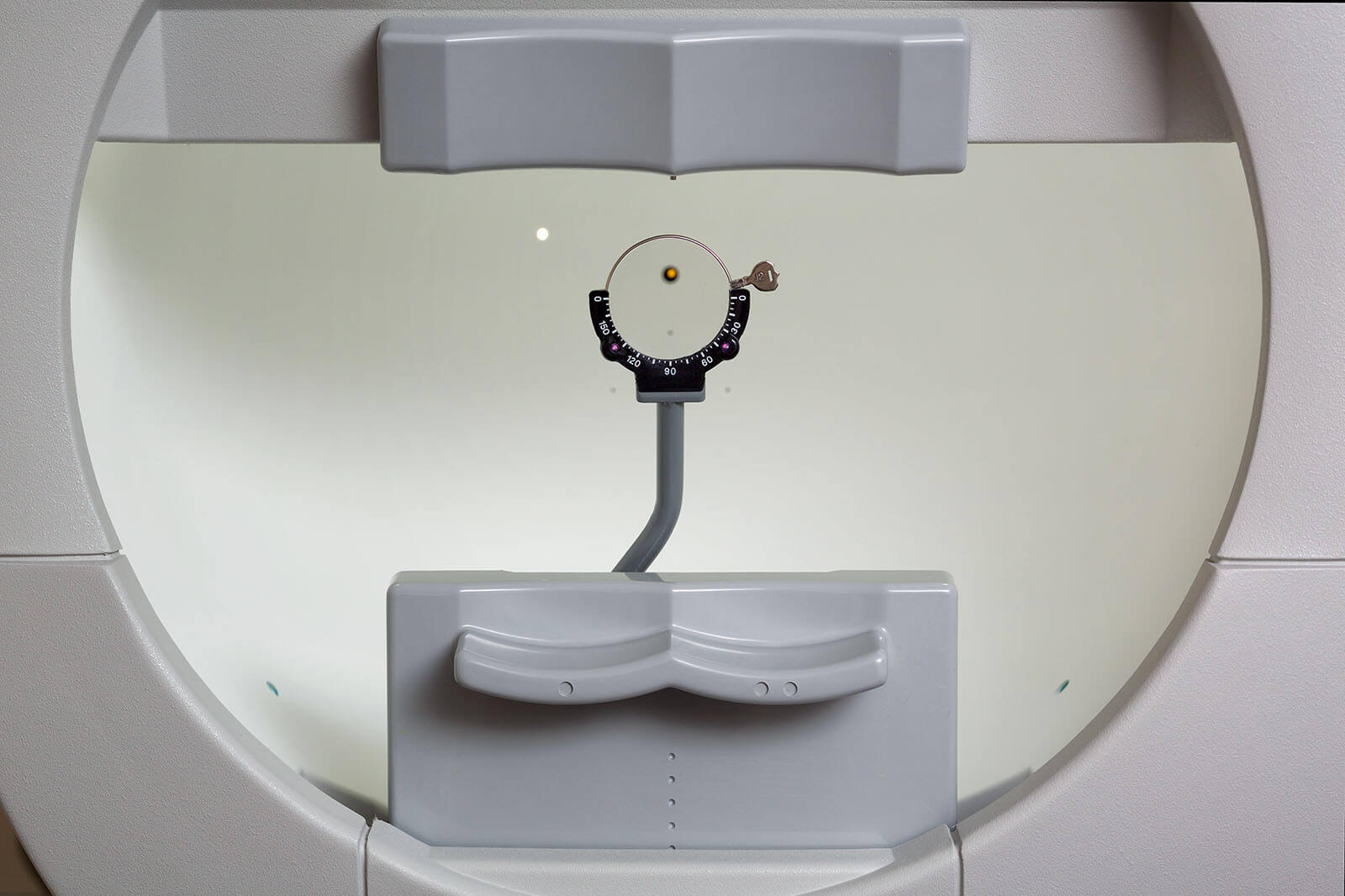
Glaucoma silently diminishes your vision, from side vision and eventually to central vision. Glaucoma is a disease in which damage to the optic nerve leads to progressive, irreversible vision loss. Glaucoma does not typically present any signs or symptoms before damage has occurred. During your exam our doctors routinely test your eyes for signs of developing glaucoma.
Damage to the optic nerve is most commonly, although not always, a result of high intraocular pressure. During exams, the doctor will place a numbing drop on your eyes to get an accurate read of the eye’s
pressures. If the intraocular pressure exceeds 20 he may want to check again in the coming weeks. Repeating high pressures may simply indicate that the thickness of your cornea is more dense than the average eye masking an accurate reading of eye pressure. A simple one-minute test, pachymetry, is performed by the doctor who will place an instrument gently on your eye to measure the thickness.
Elevated pressures are an area of concern as it may be an indication that the optic nerve is damaged. In order to view the optic nerve your doctor will dilate your eyes and view the shape and color of the optic nerve.

A visual field test may indicate areas of vision loss. This test requires you to sit at a machine, look straight ahead, and click a button when a flash of light comes into your line of vision. The results of this test produce a map of your field of vision and indicates if there are any areas you did not see, pointing out areas of potential vision loss.
Once a glaucoma diagnosis has been presented, the doctor will need to determine what type of glaucoma is present. Two kinds of glaucoma have to do with the angle where the iris meets the cornea. Gonioscopy is completed where the doctor will place a contact lens containing a mirror on the eye. The mirror allows the doctor to determine if the angle is opened or closed.
Depending on the stage of your glaucoma, treatment may be as simple as medication prescribed by your optometrist. Otherwise, treatment can result in your optometrist referring you to a specialist who can provide laser treatment or surgery.
Once you have a diagnosis of glaucoma your eye health is monitored closely as currently there is no cure, only control of the disease. Your optometrist will see you every few months to check your intraocular pressures and order extra testing as needed to monitor peripheral vision and your optic nerve. An Optical Coherence Tomography (OCT) is used to detect even small changes in your optic nerve.
